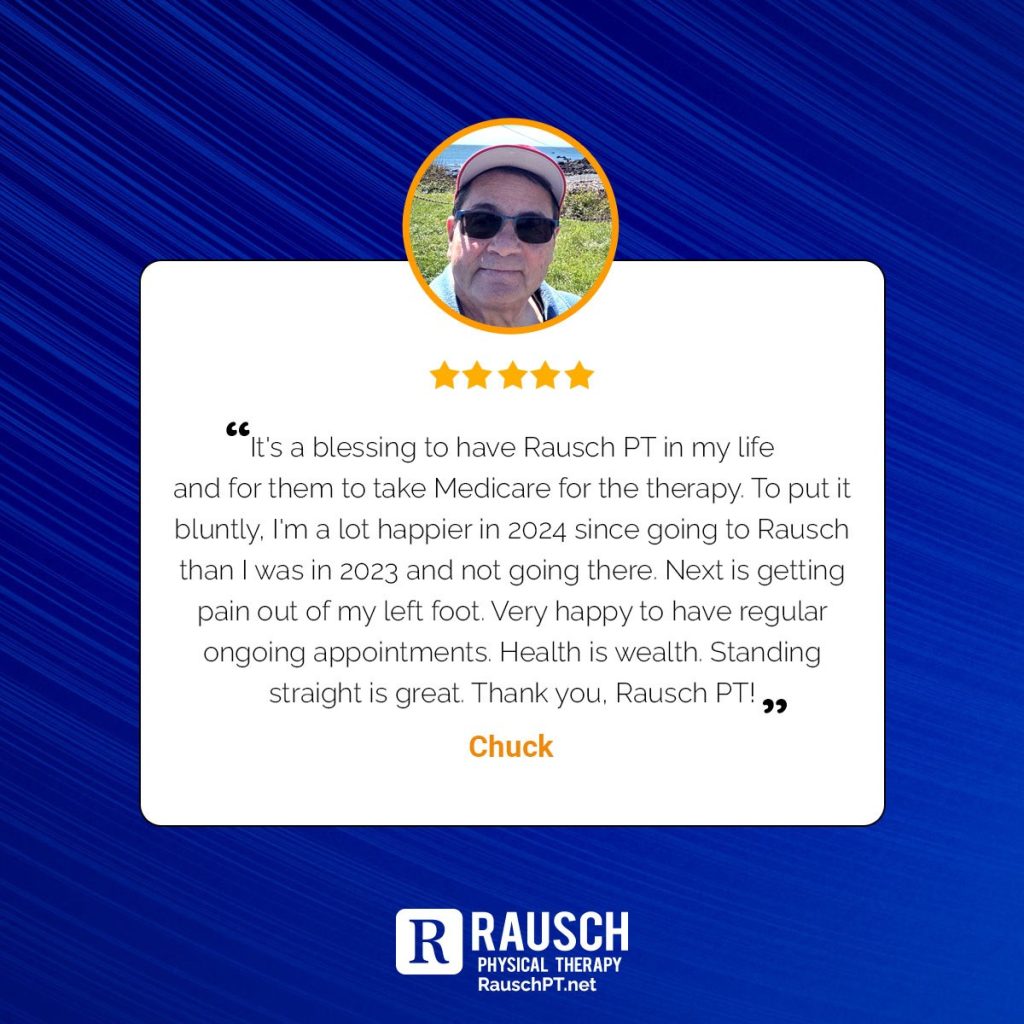Balancing a healthy diet and a consistent exercise routine can often feel like a complicated equation, but successful healthy living is truly about synergy, not sacrifice. The key to long-term,
Benefits of Physical Therapy for Older Adults
September 1, 2024 6:00 am / Category: Laguna Niguel

As we age, maintaining physical function and independence becomes increasingly important. Physical therapy offers a powerful tool as we age to improve mobility, manage pain, and enhance overall quality of life. Let’s explore how physical therapy can empower older adults to live life to the fullest. Age is just a number, and we’re here to help you keep moving, traveling, working, and playing—enjoying life with enhanced mobility and freedom from pain.
But it didn’t. Even after 5 months, things hadn’t improved. Rice knew it was time to see a physical therapist. It’s something she has noticed more with age.
“Sometimes you can get away with ignoring things, but less so as you get older,” she says.
Her therapist prescribed a progressive exercise program that was specially designed for her injury. She gradually built strength without overloading her body. After a few months of consistent work, Rice was back to running.
Without it her recovery would have been far harder and may not have happened at all. That’s because physical therapists provide “fitness with clinical precision,” says physical therapist Gene Shirokobrod, DPT, of Elliott City, Maryland.
As you age, your body changes. You start to lose more muscle and bone mass and may have trouble with formerly easy tasks like walking up stairs or standing up from your seat. Your sense of balance can start to get worse and you may feel more tired, weak, and achy.
“If you help people deal with aches and pains earlier, they’re less likely to lose strength and mobility. If they keep their strength and mobility, they can keep moving and active. You can help keep them safe and independent in their home,” says physical therapist Abby Bales, DPT, of Reform Physical Therapy in New York.
For example, Rice, the runner in Arizona, sought treatment for her hamstring injury. But she soon discovered a bonus effect of her regular physical therapy sessions: Her balance improved. And with better balance and strength, Rice is less likely to fall.
That’s more important than you might think. One in four older adults fall each year, according to the CDC. And every year falls cause broken bones, head injuries, and other problems, especially in older people. This can make it much harder to get around by yourself and live independently, especially as you age.
“Physical therapy can make a huge difference from a daily life perspective,” Rice says. “Your whole quality of life revolves around your ability to move around your house and do daily activities. It’s huge.”
You Don’t Have to Wait Until You’re in Pain
You may think physical therapy is necessary only after an injury or surgery, like a fall or knee replacement. However, physical therapy can assist with a wide variety of conditions.
- Osteoporosis (brittle bones). More than half of people over the age of 50 have osteoporosis. Regular physical therapy can improve bone health and decrease bone loss.
- Osteoarthritis. Your physical therapist can prescribe exercises and treatment that can lessen pain and increase your range of motion so you can do more things.
- Vertigo (dizziness). A specially trained “vestibular physical therapist” can help you when you have problems with balance and dizziness such as vertigo, a problem in the inner ear.
- Neurological conditions. These include conditions like Parkinson’s disease, Alzheimer’s disease, and multiple sclerosis. Physical therapy can help improve your ability to perform daily tasks and stay safe. “By working the musculoskeletal and neurological system together, you can improve function across the board,” says Bales.
- Cancer. For some types of cancer pain, a PT program can lessen pain and keep you strong enough to continue in your home and work life. Physical therapist Cynthia Gormezano Suissa, a survivor of Hodgkin’s lymphoma (a type of cancer), is waiting for a double lung transplant. In her weak state, she says, it’s even more important for her to do her PT exercises so she can continue to take care of herself for as long as possible.
- Incontinence. As people age, it’s more common to leak urine or always feel the urge to go. It can be embarrassing, unpleasant, and inconvenient, leading you to socialize and exercise less, which could worsen both your physical and mental health. Physical therapists with specialized training can teach you to contract, relax, and coordinate the muscles of the pelvic floor so that you can keep this problem to a minimum.
How Family and Friends Can Help
It can be tricky to navigate a new PT program for an older loved one. Start by being as supportive as you can, but try not to intrude more than necessary.
Beyond that, you can try gentle reminders to help loved ones stay accountable and consistent with their PT appointments and exercises. It’s fine to ask if they need help with their exercises. If a walk is part of the prescribed program, you could offer to join them. And if transportation is a problem, you can offer to drive them.
Where to Find a Physical Therapist
If you think you or a loved one might benefit from physical therapy, talk to your doctor. They can suggest some clinicians who are able to treat your specific needs. Ask a friend or colleague, too, if they have recommendations. The American Physical Therapy Association (APTA) has an online tool to find a physical therapist near you. In some states, you can see a physical therapist without a referral from your doctor.
Ready to help your loved ones live a more active and independent life? Our physical therapy programs can be designed to empower older adults and improve strength, balance, and mobility. Call us today at 949-276-5401. For more tips, follow us on Instagram.
Reference: [https://www.webmd.com/healthy-aging/features/physical-therapy-benefits-for-seniors]







